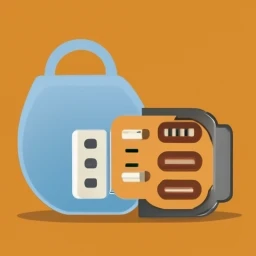VIETNAM PERSPECTIVE ON HOW AI-GENERATED WORKS WILL BE GRANTED UNDER COPYRIGHT PROTECTION
29 Jan 2024
Vietnam
share
The world has recently witnessed massive releases of electronic applications using artificial intelligence (AI). A prime example is ChatGPT – a model which interacts in a conversational way --released in 2022. ChatGPT offers innumerable “interactions”, many of which include analyzing data, drafting new paragraphs, and even creating new images, which result in new logos, comic strips, etc. While AI is not something new, the term originated in the 1950s, recently it has become one of the hottest scientific areas and topics. AI raises complex issues, one of which is whether AI-generated works are subject to copyright protection.
AI is not a simple concept to be easily defined. In short, AI simulates human intelligence in machines. A subset of AI is machine learning, which refers to the concept that computer programs can automatically learn from and adapt to new data without being assisted by humans. Such computer programs have a built-in algorithm allowing them to learn from data input, evolve, and make future decisions that may be either directed or independent. When applied to art, music and literary works, machine learning algorithms are actually learning from input provided by programmers.
AI is actually capable of imitating the cognition of creativity and this is shown by the production of works in “almost every copyrightable medium, such as music, poetry, literature, news, and many others.” In particular, AI has been used to generate music, art, poems, movie scripts, designs and more. A prime example occurred in 2016, when a group of museums and researchers in the Netherlands unveiled a portrait entitled The Next Rembrandt, a new artwork generated by a computer from analyzing thousands of works by the 17th-century Dutch artist Rembrandt Harmenszoon van Rijn. The next case for generating literary work was when a short novel written by a Japanese computer program in 2016 reached the second round of a national literary prize. And AI is also capable of “composing” music, since the Google-owned AI company Deep Mind has created software that can generate music by listening to recordings.
Following such technological developments, a new term of “AI-generated works” came into force. Some commentators assert that some AI-generated works should receive copyright protection, arguing that AI programs are like other tools that human beings have used to create copyrighted works. Other commentators and the US Copyright Office question whether AI users exercise sufficient creative control for AI to be considered merely a tool. In other words, AI is being examined to determine to what extent AI inteferes with the creation of works, which later defines the “originality” of created works and then decides whether the works shall be protected under copyright.
In different legal systems, originality revolves around human creativity. In the UK – a common-law jurisdiction, a work is “original” for copyright purposes if it is the result of its author’s own skill, labour, judgment and efffort; whereas under the civil law system, a work must express the personality, ethics, awareness, emotions, and social experiences of the author. During the creative process, laws of many countries agree that the author's use of supporting tools shall not be deemed as the lack of “originality” - one of the prerequisites for being recognized as a work. Human beings – the most common subject of “authorship” – may take the uses of different tools in their creative process. In the past, these tools could be pens, papers, etc., but in the era of 4.0 technology, these tools normally refer to computers, computer software, electronic applications, and so on.
AI, in some cases, “is no longer acting as a tool to assist humans to create works; the technology is generating works autonomously.” Nevertheless, “human beings are still indispensable for works to be created, even where an AI system is involved.” Humans create AI systems, provide data input for AI to conduct further steps, even play the key role to activate the AI operation. Up until now, it is obvious that without human involvement in any steps of the creation of works, the AI system would not be capable of assisting, or generating works, or both.
The question now is, to whom copyrights shall be granted, given that the process of AI generating works includes different roles of human-intervention.
The Copyright, Designs and Patents Act 1988 (CDPA) of the UK defines AI as “the work is generated by computer in circumstances such that there is no human author of the work”, and the author is “the person by whom the arrangements necessary for the creation of the work are undertaken”. The UK was one of the first countries to anticipate the participation of AI in generating works, yet they only admit “the person” – a human being, who conducts arrangements on the creation of the work - as an author to be granted to copyrights.
In other cases suggesting a second approach, the person shall be granted to copyrights could be the AI developer who first wrote the code. This approach gives authorship to the programmer and is applied in several countries such as Hong Kong (SAR), India, Ireland, New Zealand and the UK.
And the third opinion proposes that authorship should be granted to those who input the data for AI to generate works. However, this third approach seems difficult to determine the extent of human contributions that involved in AI’s operation, i.e. the creative process, hence it is not possible to grant them with the authorship or copyright rights.
In Vietnam, these perspectives have only been perceived as references to legislations since the legal framework regulating AI-generated works has not yet been completed. The recent rapid growth of AI applications and the incredibly broad applicability of AI to all aspects of life, including culture and art, makes is crucial for Vietnam to improve the legal framework for intellectual property rights, and copyright particularly, for AI-generated works. However, the regulations stipulating intellectual property rights granted for AI-related works need to be very thoughtfully, carefully, and ethically considered to reasonably recognize AI-generated works as an inevitable trend that cannot be reversed.
In conclusion, the protection of AI-generated works should not diminish the encouragement of the role of humans in creative activities. Further, since AI has become widespread and will continue to grow in its importance and relevance to creativity, countries need to further develop their intellectual property laws to address the increasingly important of role of AI.





